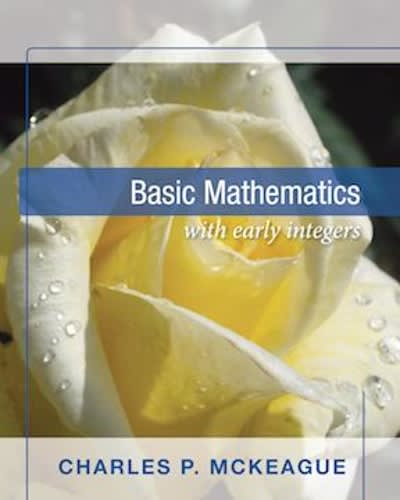Question
You have 26 cards, labeled with the letters A-Z. The deck is shuffled randomly. You draw cards without replacement. (a) Let L be the number
You have 26 cards, labeled with the letters A-Z. The deck is shuffled randomly. You draw cards without replacement.
(a) Let L be the number of letters we needed to draw to have seen any two of A,B and C, but not all of them. For example, if the 3rd letter is A, the 5th letter is C, and there is no B in the first five draws, then we stop at 5th draw, and L = 5. What is the PMF of L?
(b) Given that we have drawn k many cards already (for some k = 0, . . . , 23) and neither A nor B nor C have yet appeared. Suppose we stop drawing cards immediately after we have seen any two of A,B and C (but not all of them). What is the probability that when we stop, the last two letters drawn will be consecutive (either AB, BA, BC or CB)?
Step by Step Solution
There are 3 Steps involved in it
Step: 1

Get Instant Access to Expert-Tailored Solutions
See step-by-step solutions with expert insights and AI powered tools for academic success
Step: 2

Step: 3

Ace Your Homework with AI
Get the answers you need in no time with our AI-driven, step-by-step assistance
Get Started


